1907 - 1910
Planning for long-term needs
Toward the end of 1907, the Board of Trustees realised that instead of improving the Hospital by an addition here and there as required, it would be wiser to consider a comprehensive scheme of improvements, which could be undertaken by degrees. In early 1908, it was decided to invite offers of competitive designs. One of the specifications was that designs needed to include provision for a Children's Hospital. Also, designs should allow for development in stages but leading to an integrated hospital when complete.
Many plans were submitted, and eventually, the first prize went to architects Messrs Atkins and Bacon. Sadly, their winning designs are not available.
Despite selection of a winning design for future hospital development, no further action could be taken for some time because of a lack of funds, and the hoped-for integration of future developments did not occur.
The Hospital in 1910
This photograph taken in 1910 looks across the hospital in a south-easterly direction. The Victoria Hospital and Seddon Shelters are visible beyond the main hospital.
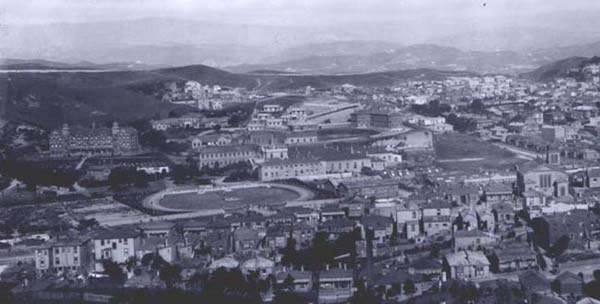 photograph courtesy Alexander Turnbull Library, National Library of NZ, Te Puna Matauranga o Aotearoa
photograph courtesy Alexander Turnbull Library, National Library of NZ, Te Puna Matauranga o Aotearoa
Another 1910 photograph looks across part of the hospital and shows a large unbuilt area to the west. The rather unattractive buildings leased by the Carrara Ceiling Company are seen towards Riddiford Street. Note the large white house in the foreground on Riddiford Street (with tradesmen up a ladder). This was where Dr Fred Bowerbank lived and practised at this time, though it would be a couple of more years before his appointment to the honorary visiting medical staff of the hospital. The building subsequently became the home and surgery of Dr William F Shirer and later was for many years the home of the ‘John Street Doctors’.
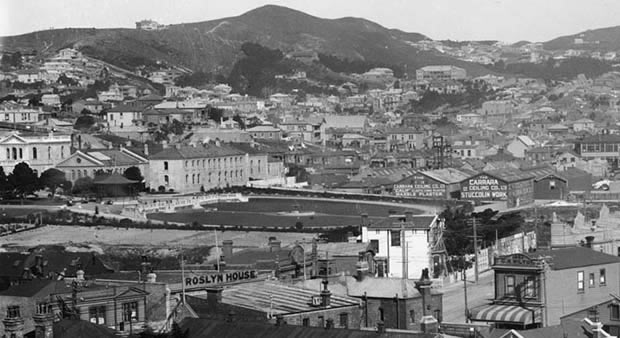 photograph courtesy Alexander Turnbull Library, National Library of NZ, Te Puna Matauranga o Aotearoa
photograph courtesy Alexander Turnbull Library, National Library of NZ, Te Puna Matauranga o Aotearoa
Another 1910 photograph looks across the hospital in a south-west direction and shows the increased development of Newtown by this time. The Victoria Hospital is at the centre far-left of the photo.
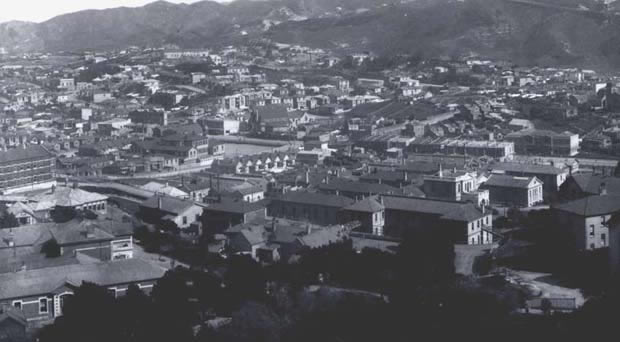
photograph courtesy Alexander Turnbull Library, National Library of NZ, Te Puna Matauranga o Aotearoa
The care of infectious fevers
The Fever Hospital was opened in 1910. This wasn’t the first accommodation for patients with infectious fevers however. There was a separate eight-bed fever ward, remote from the main building, in Toxward’s 1881 hospital. Then, in 1892 Wellington was hit by an outbreak of typhoid fever, and the “Hill Ward” housing up to 23 patients was hastily erected in corrugated iron.
This photograph shows the Fever Hospital under construction. Access was from Coromandel Street and there was provision for a separate nurses’ home and administration block.
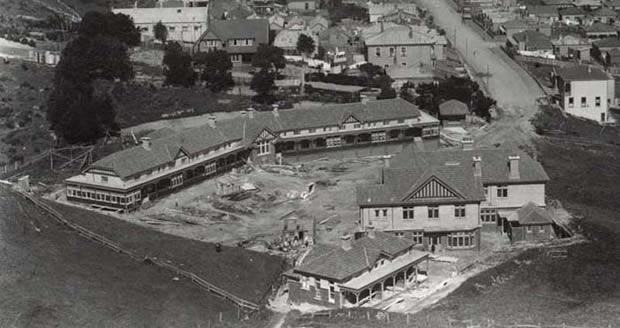
photograph courtesy Alexander Turnbull Library, National Library of NZ, Te Puna Matauranga o Aotearoa
The completed Fever Hospital, seen below, was later renamed ‘Ewart Hospital’ in honour of the very popular Surgeon Superintendent Dr John Ewart.
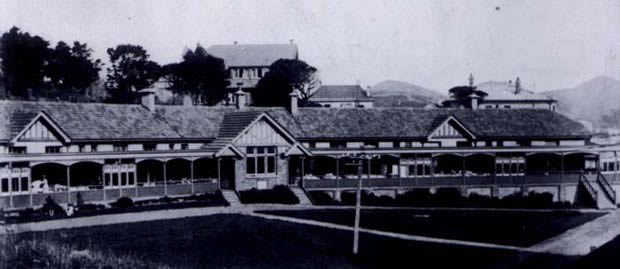
photograph courtesy Alexander Turnbull Library, National Library of NZ, Te Puna Matauranga o Aotearoa
With ever growing numbers of patients with pulmonary tuberculosis, the Seddon Ward and Shelters became inadequate. A second storey was added to Ewart Hospital in 1919 and tuberculous patients transferred to Ewart Hospital from the Seddon Ward and Shelters. A new Fever Hospital was built right at the top of the hill to the east, opening in 1919. The photograph below shows the new fever Hospital as it was in 1926.
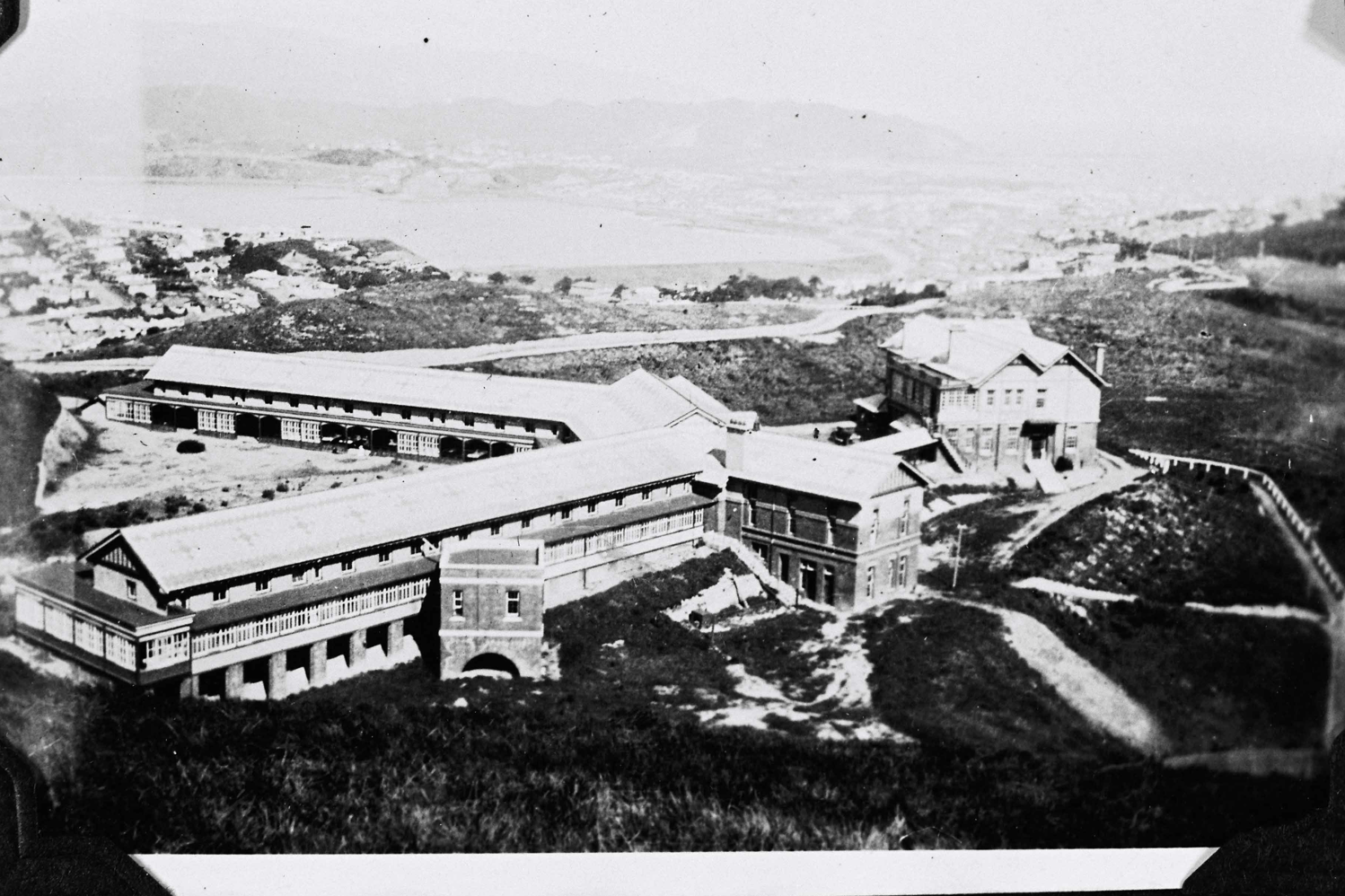
photograph courtesy Photographic Department, Wellington Hospital / Wellington School of Medicine
previous page - The First Newtown Hospital next page - The Children's Hospital
top